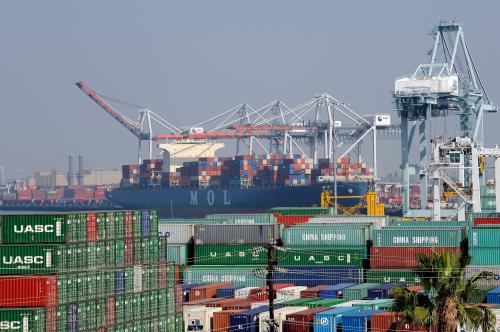It was always a longshot that ordinary American workers would gain from business tax reform. Facing global competition to attract business investment and profits, the consensus in Washington was to surrender to business interests by lowering corporate tax rates, eliminating most taxes on profits earned or reported abroad, and granting amnesty for the trillions of profits stashed abroad free of tax.
Then came a genuinely good idea that would make America competitive without having to surrender: The border adjustment tax (BAT) pushed by Ways & Means Chairman Kevin Brady. Although it has now been killed by the Republican congressional leadership and the White House, it’s worth understanding why it would be better for the U.S. economy and American workers than any available alternative.
In 2014, Mr. Brady’s predecessor, Dave Camp, tried a conventional lower-the-rate, broaden-the-base business tax reform. The Joint Committee on Taxation—the official scorekeepers in Congress—said it would slow growth and reduce wages. After the 10-year budget window, tax revenue from corporations would plunge by about $800 billion. Not only would American workers shoulder more of the tax burden, they’d have smaller paychecks with which to do so.
The lesson from that experience should have been that plain vanilla, broaden-the-base-lower-the-rate corporate reforms don’t boost job growth and they don’t help the working class. One fallacy exposed in that effort was that repealing “loopholes” or tax expenditures can prevent workers from picking up the tab for business tax cuts. It turns out there aren’t any big loopholes to close in the corporate sector, only big tax breaks for domestic investment: deductions for new investments in equipment, software, and machinery and for domestic production activities, and favorable accounting methods for businesses that build and hold goods for sale. To get a sense of how trading those for a lower rate would affect the working class, consider that the biggest loser would be manufacturing and the biggest winner finance.
For similar reasons, lowering the rate and broadening the base doesn’t bring back jobs from abroad. Sure, a multinational might spend less effort shifting a dollar of reported profits from the U.S. to low-tax Ireland. But in a system where the tax bill is based on which country the income is earned, the choice to start a business or build a factory in the U.S. versus Ireland is about the total tax bill, not how it’s divided between tax rate and tax deductions.
If the goal is to disincentivize firms from inverting—moving their residence abroad—or shifting profits and activities to lower-tax countries, reforms must address why firms move abroad or start overseas to begin with. Firms don’t move abroad to pay lower taxes on foreign-source income—after all, they don’t pay that much now—but to reduce the taxes they owe on their domestic profits.
As long as there is a lower-tax country out there, there is always going to be a tax incentive to produce abroad and sell it in America, rather than to make it in America in the first place.
Which brings us back to the BAT—a reform that would stop taxing companies on where their profits are earned, but rather on where their goods are consumed. In this way, the BAT addresses the fundamental problem: as long as there is a lower-tax country out there, there is always going to be a tax incentive to produce abroad and sell it in America, rather than to make it in America in the first place.
Under the BAT, however, all companies would pay tax if they sold to Americans, no matter where the goods and services were produced or where the company makes its headquarters. If firms don’t sell to Americans, they don’t pay U.S. tax. And if something is produced in America and consumed abroad, that’s tax free too. In this world, the U.S. tax rate or tax burden no longer matters for the firm’s decision on where to locate.
Without this shift in how the U.S. taxes business profits, protecting the domestic tax base and encouraging firms to stay in the U.S. will remain competing priorities. If we lower corporate tax rates to compete with countries like Ireland, tax revenues suffer and our already dismal budget outlook grows darker. But to encourage firms to stay in the U.S. without drastically lowering rates, we’d have to impose tough rules on domestic corporations. Even the best versions of such rules developed by the staffs at Treasury and the House Ways & Means Committee, wouldn’t succeed in keeping many companies from inverting and, further, couldn’t apply to foreign corporations to begin with.
Taxing companies based on where their goods are consumed frees policymakers to retain or expand tax breaks for domestic investment, as in Chairman Brady’s plan, and the rate can be set to bring in the revenues the federal government needs. As preliminary Treasury estimates showed, the required rate for a revenue-neutral reform is still likely to be below the current corporate rate.
Under a BAT, the U.S. would become an extremely desirable place to locate businesses and investment, and would reverse the shift of businesses abroad. That’s good for American workers not just because it would create jobs at home, but because the border adjustment insulates them from having to pay for corporate tax cuts. Long live the BAT.





Commentary
Going to BAT for American workers: Why the border adjustment tax was a genuinely good idea
July 28, 2017